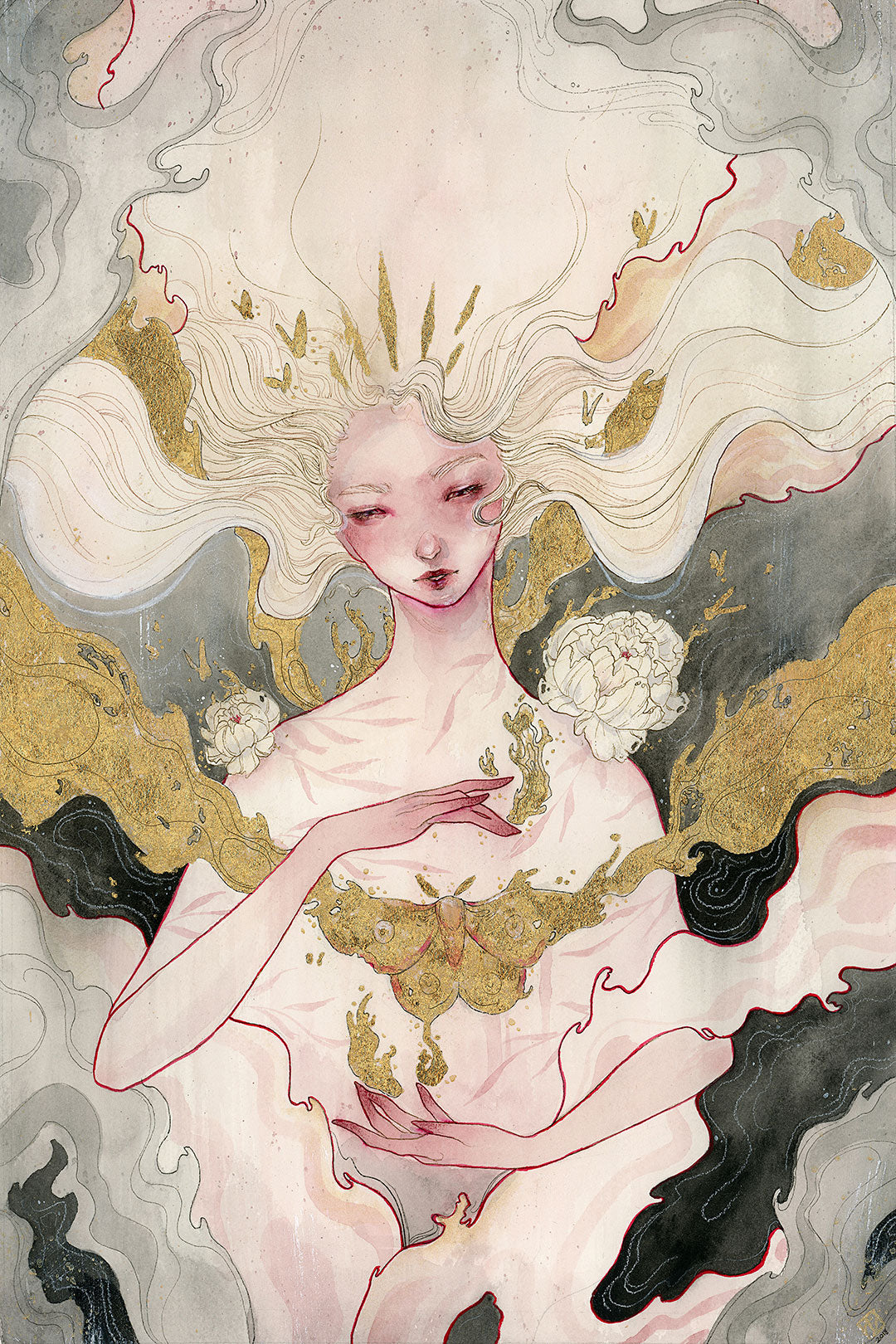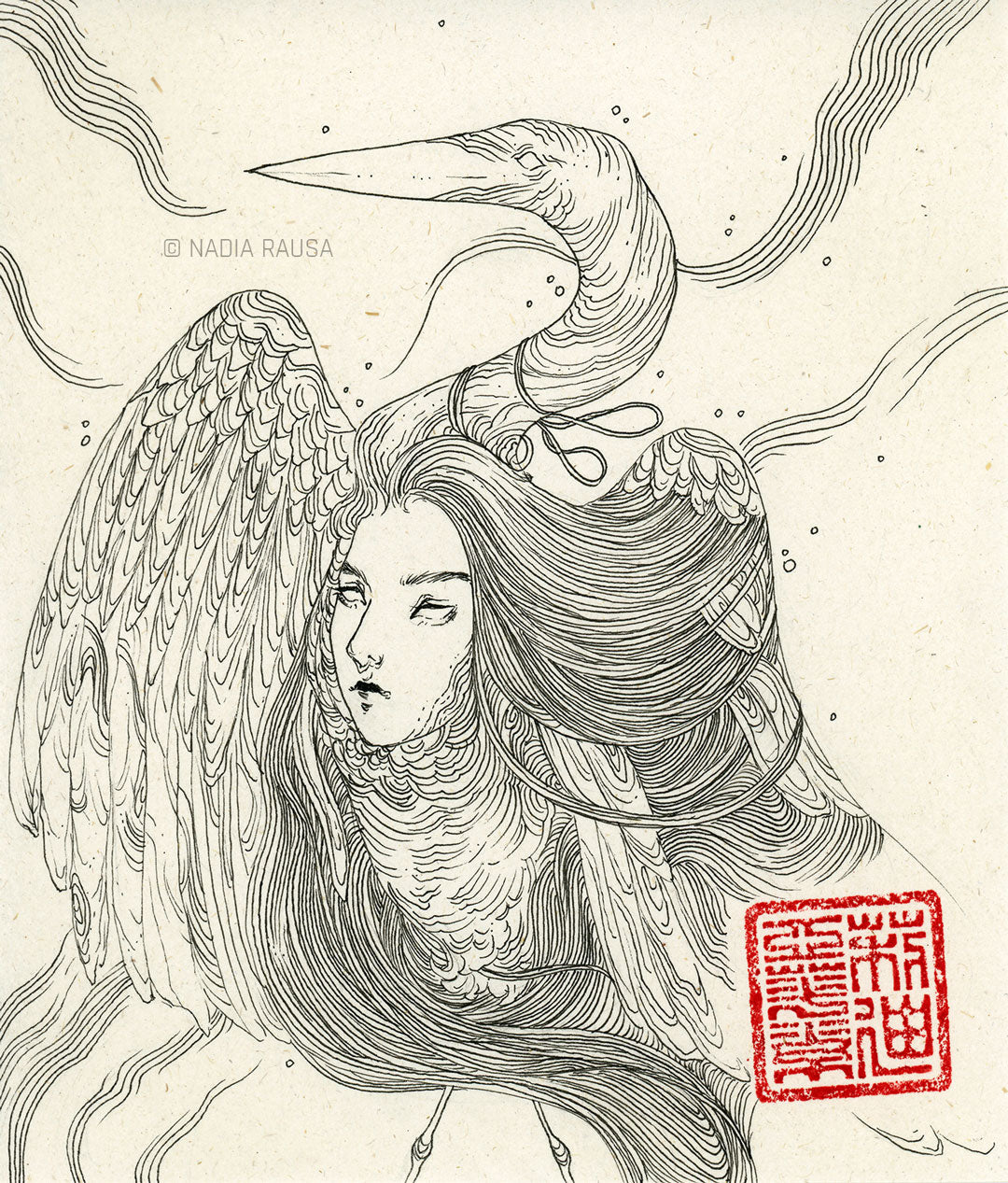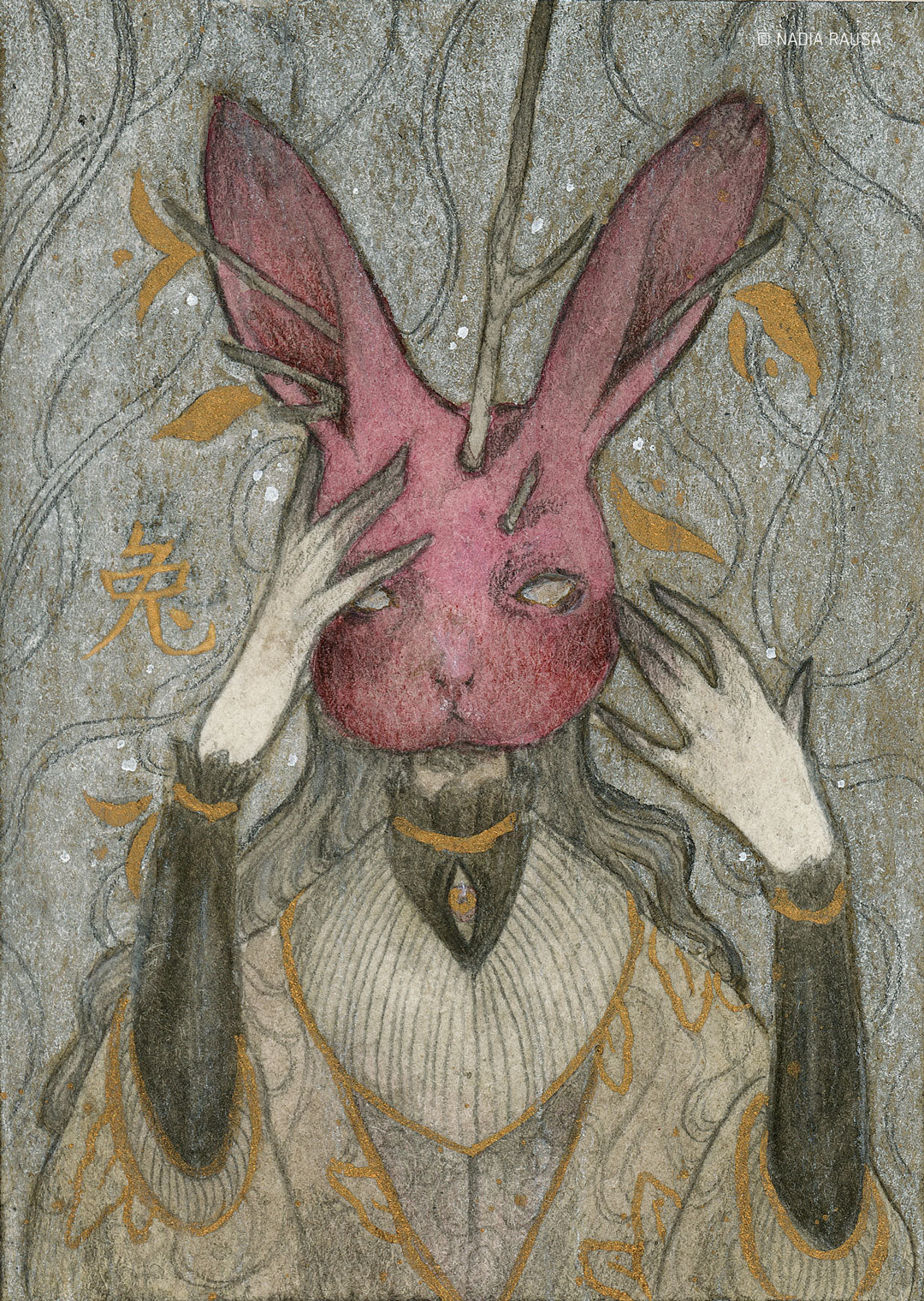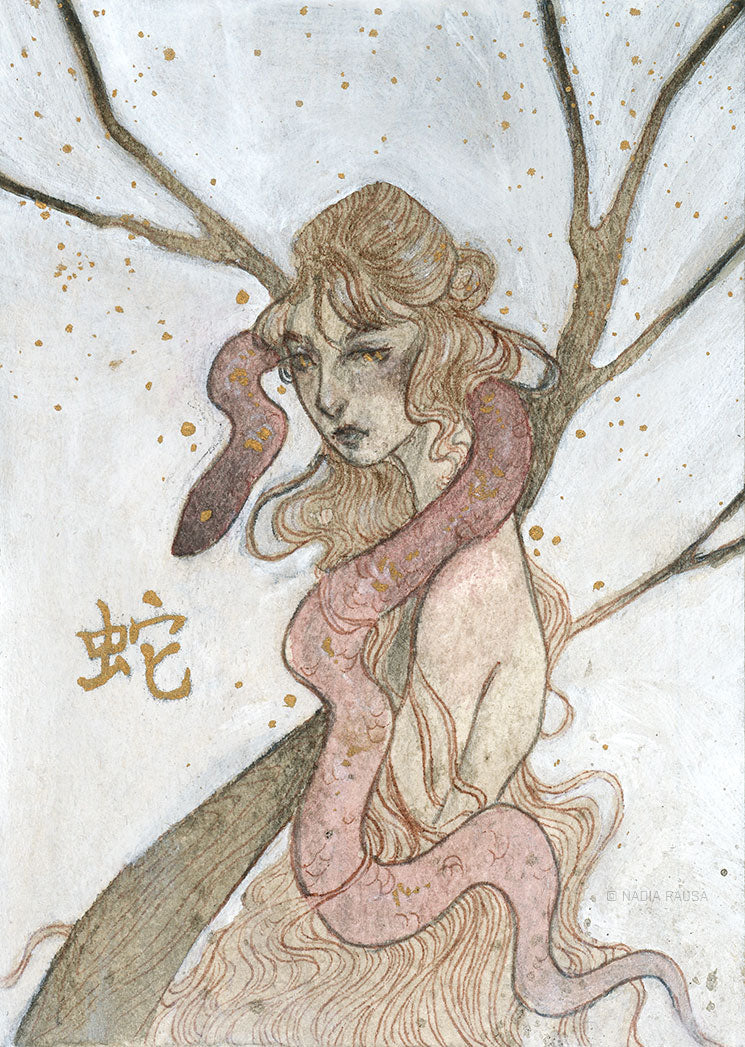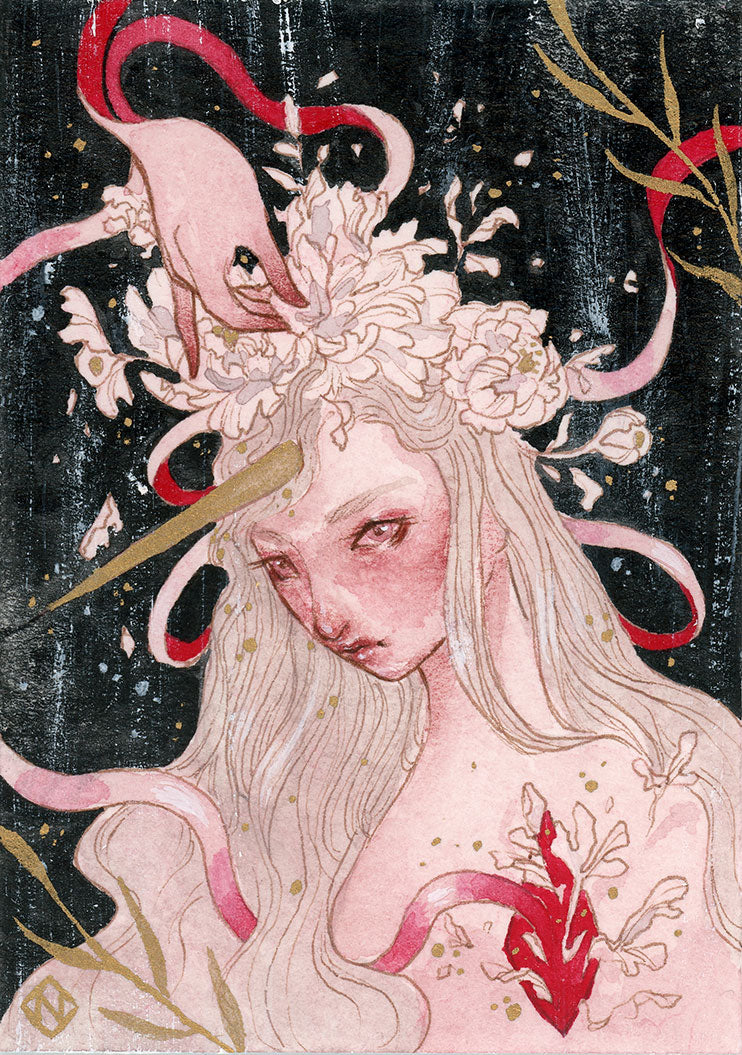Meet Nadia Rausa (@nadiarausa)
Korean-Alaskan illustrator Nadia Rausa discusses her Asian-inspired style and how art can simultaneously serve as a cathartic medium and advocacy platform for those living with mental health issues.
What initially drew you to this style of illustration?
I still feel like I am discovering my style of illustration, but I've always loved fine, detailed line art, muted colors, and stark-red colors. My mother is from South Korea, which gave me the opportunity to visit Korea every few years to see my family. I loved going to museums, and being immersed in the culture and art of Korea, so I feel like my art is very much inspired by traditional Asian art.
What is it like living in Alaska? Does living in Alaska provide inspiration for your work?
It’s a wonderful place to live! I know it’s not for everyone, but I love it. The scenery and animals are absolutely amazing and living here definitely inspires me every day. Being surrounded by nature, in general, is extremely inspiring for me. So, having the opportunity to live in a more wooded area of Alaska gives me a lot of feelings of inspiration. It’s always exciting when a moose, crane or fox wanders into my backyard!
Do you have any particular artists who have inspired you?
I often feel like a sponge because I get inspired by almost anything and anyone, without being able to pinpoint where it comes from. However, some artists that I really admire (in no particular order) are Rovina Cai, James Jean, Jason Mowry, João Ruas, Teagan White, Tatiana Bonin-Giust, Sam Wolfe Connelly and Tran Nguyen.
What do you feel has been the most difficult aspect of your artistic journey?
The most difficult aspect for me, as a full-time artist, has definitely been time-management. I am still very much in the process of learning how to use my time to the best of my ability. Being self-employed definitely has its perks, but like anything in life, it also has its downfalls. I am learning how to be my own boss, but the journey has definitely been a bit difficult. Artistically, I think the most difficult aspect has been figuring out a direction for myself, such as how I want my work to look, what mediums I want to use, etc. But I know with time and experimentation, something will “click” eventually.
You have opened up about how your struggles with mental health have guided your work. What role has art played in your mental health journey?
Art has definitely allowed me to process my feelings better. Although my art doesn’t appear to have much of a mental health message, many of my pieces hold very deep meanings for me. I just hope that other people can, and will, interpret the meanings of my art in their own ways, to make them feel less alone in their struggles.
How can art simultaneously serve as a tool of awareness and of liberation for people struggling with mental health?
I believe that art can portray mental health struggles in both blatant and more discreet ways that people who don’t struggle with mental health can become more aware of it and people who do struggle with it can feel less alone. This is not just through the art itself, but through the artist as well. I feel like artists who open up about their struggles can really help spread awareness in a way that draws viewers in with intriguing art that educates them with the meanings behind it. There are a lot of people struggling in this world with their mental health and I think it is very important to bring more awareness to that in any way possible.
What is your favorite Bee Paper product and why?
My favorite product is the watercolor paper sheets. I love the texture of the paper and it has been my go-to paper for the longest time because of its affordability and quality.
Any advice for the budding artist?
Never give up and practice! I know that most budding artists are probably sick of hearing that, but I believe it’s the best advice. Art is beautiful, but also difficult. Just remember that whenever you feel inadequate, keep in mind that your perception matures faster than your skills. It will feel like you’re always falling behind, but you’re not. The best artists never stop learning and improving, so just keep moving forward. Only look back to see how much you’ve improved.


